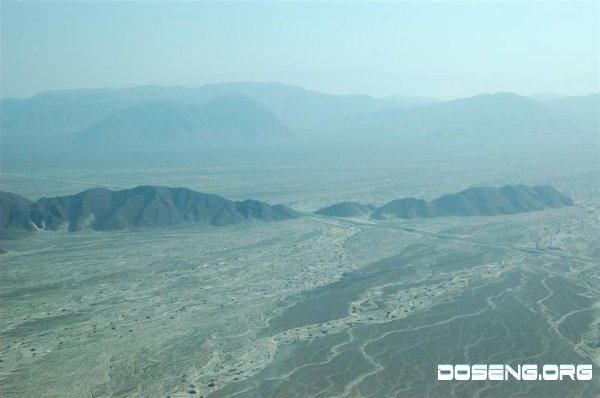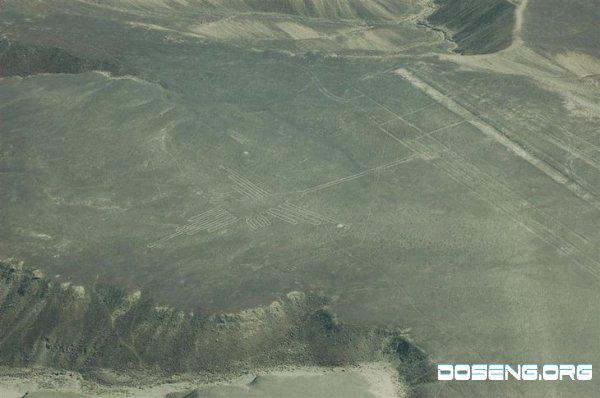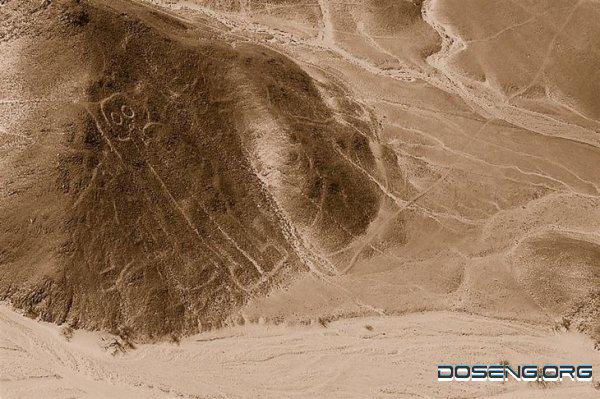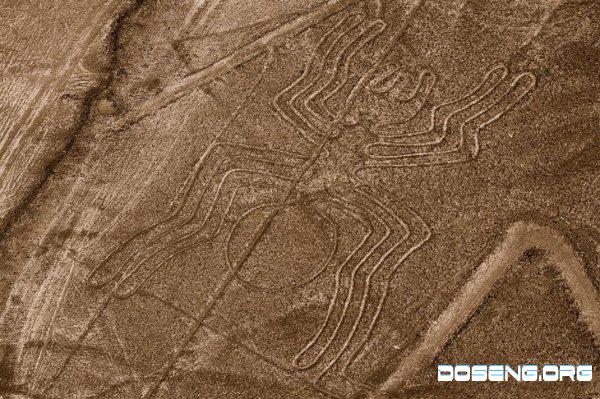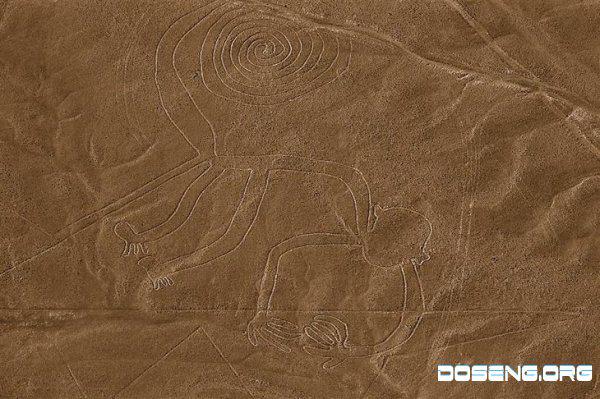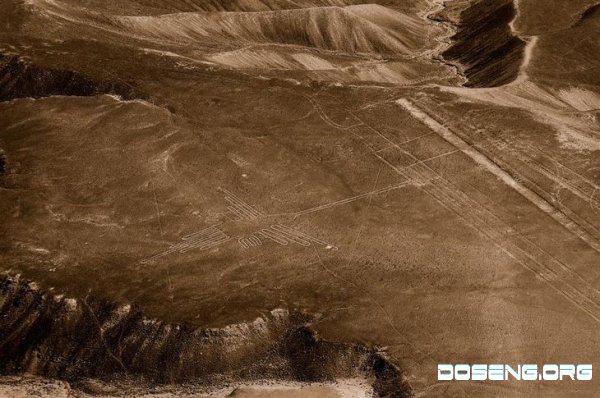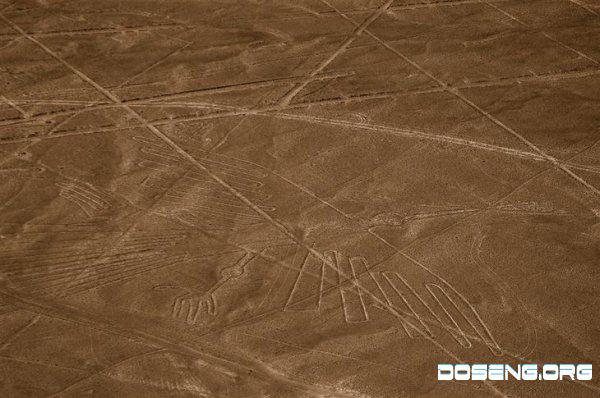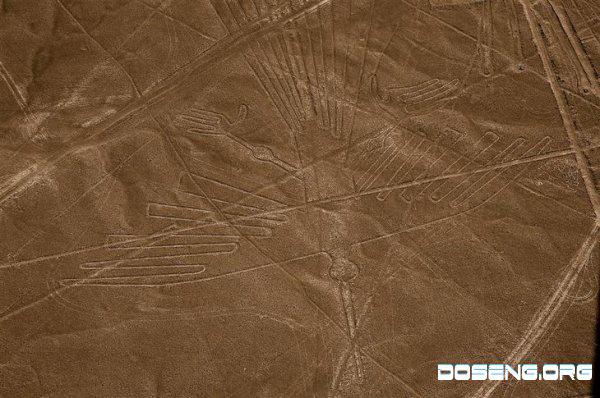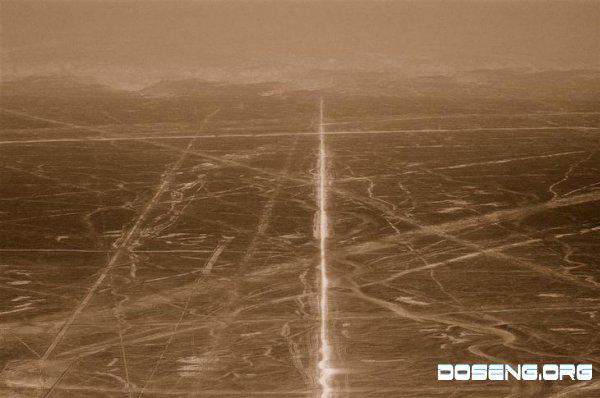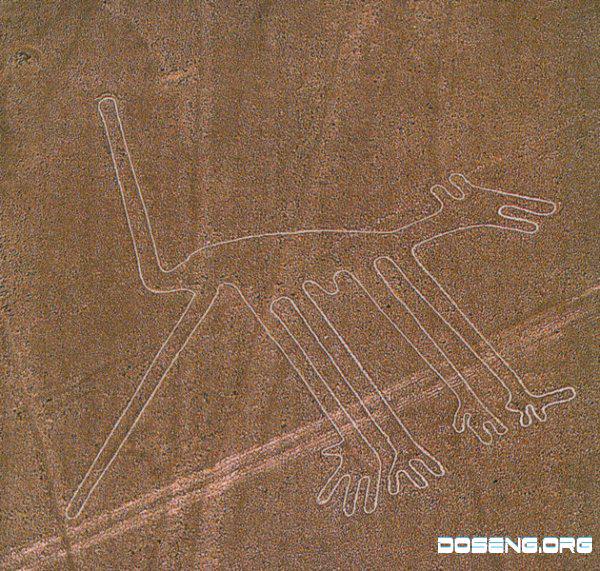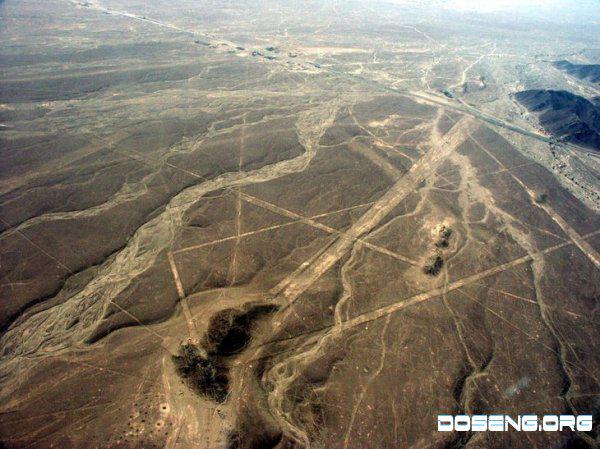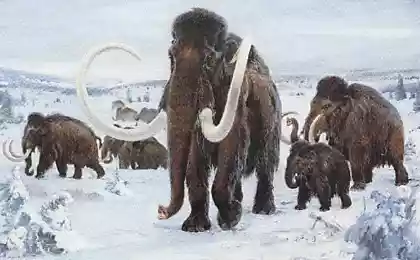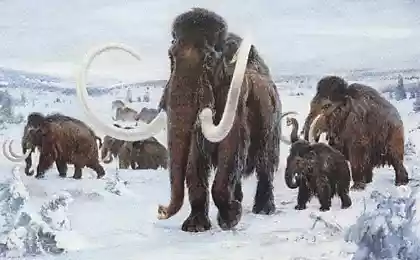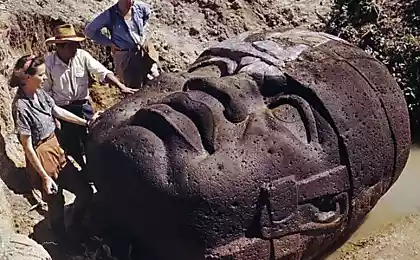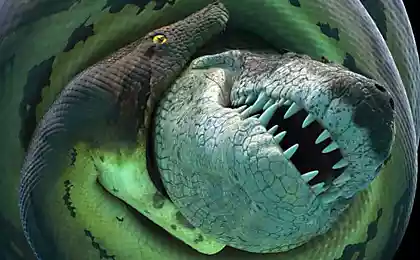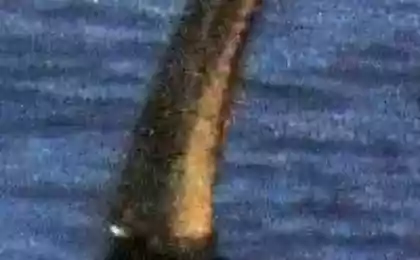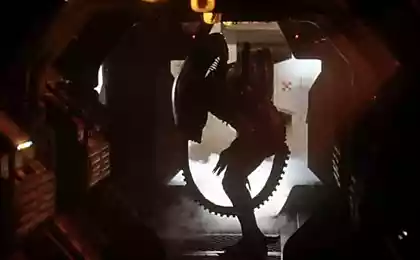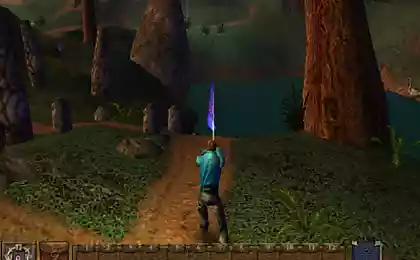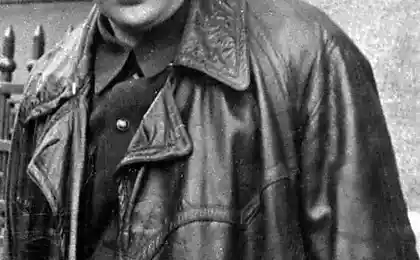1171
Giant monsters are causing a lot of evil intent or

About 2,000 years ago, one of the little-known South American civilizations created these mysterious images. In the vastness of the Peruvian Nazca desert, these lines drawn on the red rocks of the desert depict over 100 known plants and animals, simple geometric figures, as well as a scattering of obscure, unrelated to each other straight lines. There are many theories to explain their meaning and answers the question, why do they have been painted, but their true purpose is still a mystery remained perfect.
The world's largest graphic arts work covers an area of 520 km2 and in Peru. A cursory mention of the Nazca lines found in Spanish explorers XV-XVII centuries, but mostly they remained unknown to the outside world 20-ies of the century. But they did not become the subject of serious research is in Nazca to 1941 did not go American archaeologist Dr. Paul Kosok from Long Island University. Later, the German mathematician and astronomer Dr. Maria Reiche dedicated 40 years of systematization and description of these tracings, and attempts to explain them. All figures in the territory of the desert and the one carried out the same way: superficial layer of reddish rock solid line scratched until lying beneath a pale yellow rocks. Apparently, this was done manually.
Topics drawings can be divided into two categories; this figure and line, and the latter are paired as tramways, or form a geometric shape, and because in many places is depicted by a top of an image, it is evident that were first formed was drawings. This image leaves and branches of various plants, figures of animals and birds, as well as obscure creatures, such as a man with his head owls and birds with incredibly long, like a snake, neck. Same as straight lines, that there is an assumption that their conduct applied poles that fit "by eye».
Even so, it is still a mystery, as the draftsman was able to so accurately plan and stick to achieve the effect of the flat line at such large distances. Nazca drawings date back to between 500 BC and 500 year BC .; maybe it works the Nazca Indians who inhabited the regions of Peru to the formation of the Inca Empire. Nazca were farmers and treated fertile plains along the Pacific coast of Peru. They have left no descendants is no evidence of their writing: all the known facts about them were obtained by studying burial sites of Nazca and found them to objects. Such fragmentary information about the culture of the Nazca Indians do not explain why they so stubbornly painted desert.
According to one version, the lines were the ancient highways, which is unlikely, since many of them suddenly break off on hilltops. The most popular hypothesis was proposed by Dr. Paul Kosok, I believe that all of these figures and lines represent "the largest astronomy book of the world." His view is shared by Dr. Maria Reiche. She suggested that these images show the position of the stars and constellations in different seasons were used by the ancient Nazca to determine the exact time of plowing, sowing, and other important "steps" of the agricultural cycle. Some images beaks of birds, for example, indicate Natochka sunrise and the day of the solstice.
The fact that the line can clearly see only from the air, caused the emergence of the theory that in the time of their creation if Nazca Indians could fly, or at least to float above the ground. But although this is a fantastic idea is not so unbelievable - on pottery found pictures depicting the cross between a kite and a balloon - it does not explain why it took the Nazca Indians these figures and lines. Current research scientists from the University of Massachusetts seems to reveal the mystery of their meaning. The research team, which includes a hydrogeologist Steven B. Mabee and archaeologist Donald Proulksa, said that some of the mysterious lines may actually point to underground water sources. The team also includes an independent scientist David Johnson, who is present from the department of anthropology at UMASS, and postgraduates Jenny Levin and Gregory Smith.
The ancient inhabitants of Nazca may mark the location of their distribution system supply of groundwater, because during the drought, they were more reliable source of drinking and irrigation water than the river. The spatial coincidence between the location of lines and groundwater, offers an intriguing explanation of the function of some of the lines. Scientists have long noticed that the area code of animals, plants and people, and performed on the Nazca pottery are almost identical.
They seem to represent the deity of natural forces - sky, earth and water, where they are urgently needed, and that "calming" these figures to get plenty of water and a good harvest. The team studied the drawings and diagrams of underground groundwater for three separate trips in Peru, for the past five years. The study was funded by the University of Massachusetts and the National Geographic Society.
So far, research indicates that the underground water table provides a source of reliable and uninterrupted flow of water to inhabitants of Nazca. This water, as compared with the river water is a better quality when compared to levels of pH, magnesium, calcium, chloride and sulfate. It was performed archaeological and geological review of more than 128 locations of drainage systems. Their discoveries have allowed to approach another mystery - many archaeological finds have been found near the occurrence of submarine groundwater rivers that Nazca was used as an important secondary source of water.
